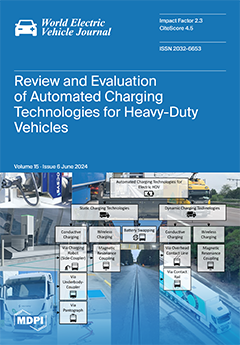Open AccessEditor’s ChoiceArticle
Quantifying the State of the Art of Electric Powertrains in Battery Electric Vehicles: Comprehensive Analysis of the Tesla Model 3 on the Vehicle Level
by
Nico Rosenberger, Philipp Rosner, Philip Bilfinger, Jan Schöberl, Olaf Teichert, Jakob Schneider, Kareem Abo Gamra, Christian Allgäuer, Brian Dietermann, Markus Schreiber, Manuel Ank, Thomas Kröger, Alexander Köhler and Markus Lienkamp
Cited by 23 | Viewed by 10558
Abstract
Data on state-of-the-art battery electric vehicles are crucial to academia; however, these data are not published due to non-disclosure policies in the industry. As a result, simulation models and their analyses are based on assumptions or insider information. To fill this information gap,
[...] Read more.
Data on state-of-the-art battery electric vehicles are crucial to academia; however, these data are not published due to non-disclosure policies in the industry. As a result, simulation models and their analyses are based on assumptions or insider information. To fill this information gap, we present a comprehensive analysis of the electric powertrain of a Tesla Model 3 Standard Range Plus (SR+) from 2020 with lithium iron phosphate (LFP) cells, focusing on the overall range. On the vehicle level, we observe the resulting range in multiple test scenarios, tracing the energy path from source to sink by conducting different test series on the vehicle dynamometer and through alternating current (AC) and direct current (DC) charging measurements. In addition to absolute electric range tests in different operating scenarios and electric and thermal operation strategies on the vehicle level, we analyze the energy density and the power unit’s efficiency on the component level. These tests are performed through procedures on the chassis dynamometer as well as efficiency analysis and electric characterization tests in charge/discharge scenarios. This study includes over 1 GB of attached measurement data on the battery pack and vehicle level from the lab to the real-world environment available as open-source data.
Full article
►▼
Show Figures





